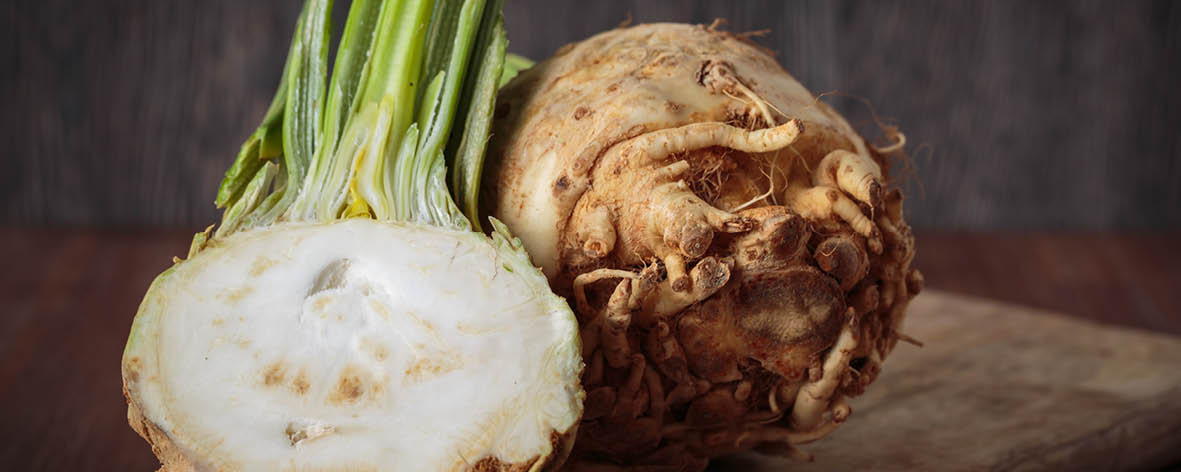Celeriac … not a pretty face

Scan our vegetable display in any of our stores at the moment and your eyes may pause on a maligned and misunderstood vegetable. “What is that ugly, warty thing?” you will ask yourself. It’s celeriac, and makes the most delicious mash you’ve ever had. Want to know more?
Celeriac, though root-like in appearance, is a corm, a bulbous storage of starch whose purpose is to feed the celeriac plant in its growing period. It has brown warty skin and white flesh that tastes like celery – and is sometimes called celery root. It is related to celery, carrot and parsnip, and was first introduced into Britain from Egypt in the 18th century and then brought to Australia by European migrants in the 20th century.
Not much of this indicates that it would be tasty in the slightest, but this is where we must put aside prejudices and get to know the vegetable beneath. Versatile, it can be used grated and raw, and combined with a mustardy mayonnaise to make the classic French celeriac rémoulade, a flavourful, crunchy salad. You can slice it thickly and bake it like pumpkin or parsnip, where its sweetness will come forward. Or you can make it into a delicious purée with milk, cream, butter and shallots.
Celeriac pairs well with parsley, blue cheese, goat’s cheese, oranges, olives, potatoes, apples, butter, cream, mayonnaise, mustard, walnuts, fish, chicken, game birds and rabbit. It’s in season in autumn and winter and sometimes into spring. Select the baseball-sized, rather than the larger ones, as they can sometimes be woody or hollow. When prepping celeriac for a dish, be aware that it discolours when it comes into contact with air. Stop this by acidulating a bowl of water with a squeezed lemon and drop in the celeriac as you cut it. You will need to peel celeriac thickly to remove all the lumps and bumps. To make a purée, treat it exactly as potato, cooking small chunks in lightly salted water in a non-reactive saucepan until tender, about 10-15 minutes. Drain and mash, then beat in seasonings – butter and cream or olive oil, and salt and pepper – and serve hot.

